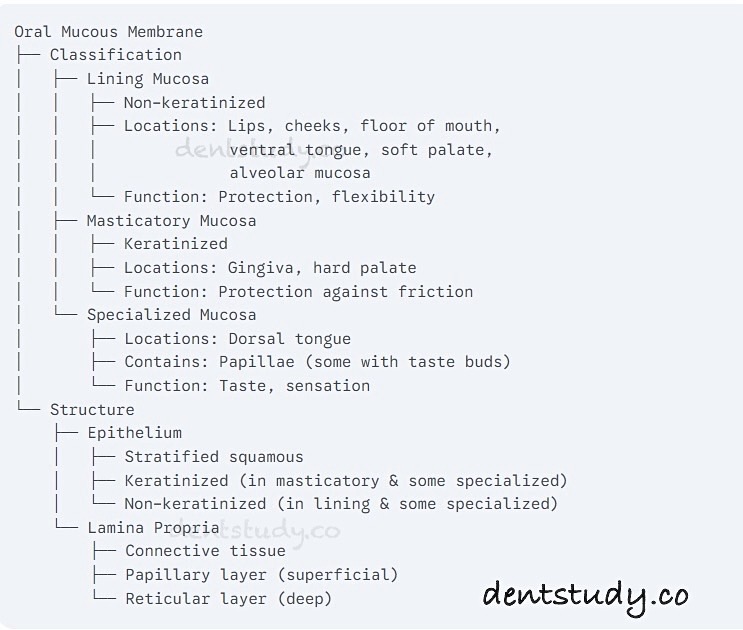DENTAL ANATOMY, EMBRYOLOGY AND ORAL HISTOLOGY
🔍 LONG ANSWERS:
Q: Classify oral mucus membrane. Write in detail about histology of gingiva. (15marks)
Ans.
💡Classification of Oral Mucous Membrane
The oral mucosa lines the inside of the oral cavity and is classified into three main types based on function and structure:
1. Masticatory Mucosa: Found in areas subject to friction and pressure during chewing, such as the gingiva and hard palate. It is keratinized, providing a tough, protective surface.
Location: Gingiva and hard palate.
Characteristic: Keratinized or parakeratinized epithelium.
Function: Withstands mechanical stress during chewing.
2. Lining Mucosa: This type covers the inner surfaces of the lips, cheeks, floor of the mouth, underside of the tongue, soft palate, and alveolar mucosa. It is non-keratinized, providing flexibility and allowing for movement.



